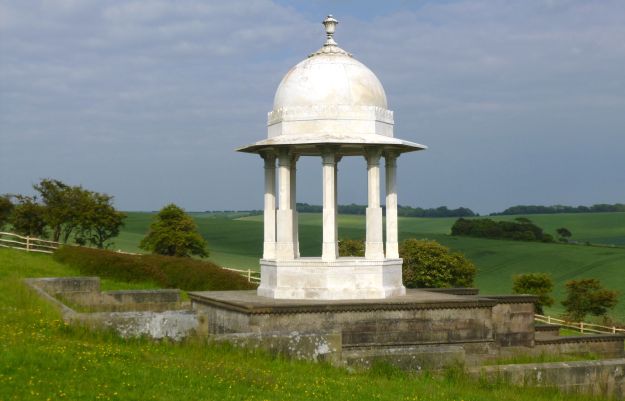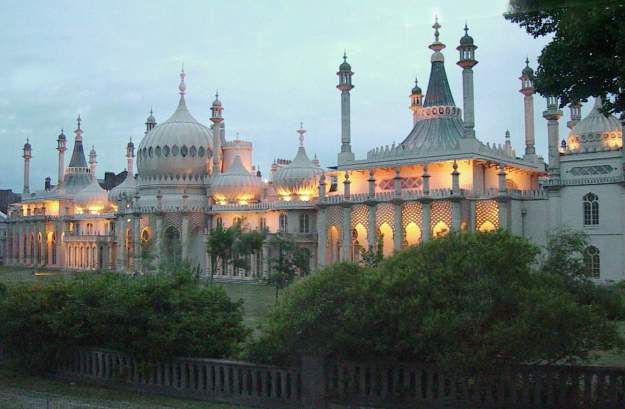Imagine the quintessential English country scene: emerald valleys, swathes of buttercups, cows gently munching the grass. It couldn’t have been more idyllic when I climbed up the South Downs on a day out from London.
A path from Ditchling village led up to a ridge; I walked along enjoying fabulous views of fields flowing down on either side. Then, as I began to descend towards Brighton, a strange white dome emerged behind a slope. As I approached it took on a distinctly Moghul form; I felt as though I was being transported to the banks of the Ganges. I wasn’t expecting any sort of building in this rural setting, let alone one that appeared to be transported from a hot, sandy plain in India. Whatever could it be?

The Chattri Memorial, on the spot where Indian soldiers who died after fighting in WWI were cremated.
I drew closer and discovered a plaque describing it as the Chattri Memorial, built to honour Indian soldiers who fought alongside Britons in the Great War. Constructed in pure, white marble, I found it very moving, alone among a scattering of windswept trees.

The word “chattri” means umbrella in several Indian languages. It was designed by Indian architect EC Henriques and is now a listed building.
We’re all familiar with Brighton’s Royal Pavilion, where the future King George IV played out his oriental fantasies as the 18th century drew to a close. Less well known is that this extravagant palace was a hospital for thousands of Indian military casualties who served on the Western Front. Fifty three Sikhs and Hindus who did not survive their injuries were cremated here on the South Downs and the Chattri Memorial built in 1921 on the actual spot of their funeral pyres.
The Prince of Wales presided at the memorial’s opening ceremony. Now, every June, crowds continue to gather here to remember the dead.
I was pleased to have come across the Chattri by chance during the World War One centenary year. As I continued my walk down into Brighton my thoughts turned to the Pavilion: it seemed fitting that the Prince Regent’s extravagance could have also served a worthwhile purpose, and that many more men were nursed back to health under its outrageous chandeliers than turned to dust in the green hills beyond its domes.
I travelled from London to Hassocks station, walked to Ditchling village with its Museum of Art+Craft, then continued up over the South Downs to Patcham and into Brighton, for the return train journey.





